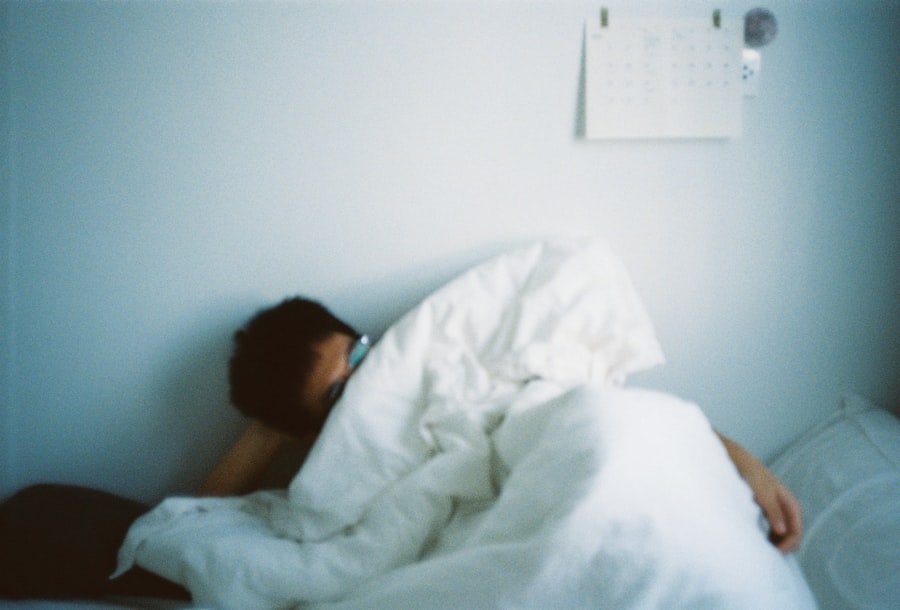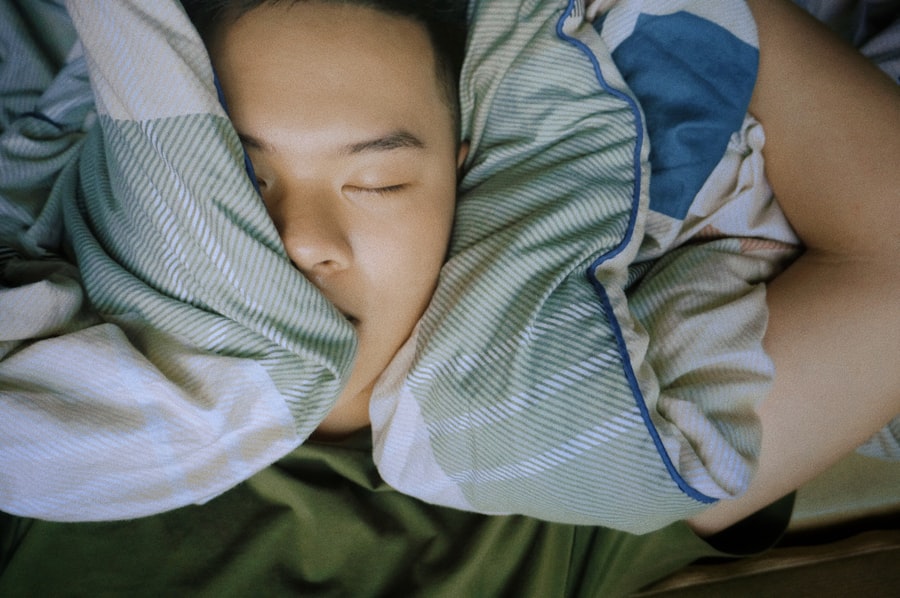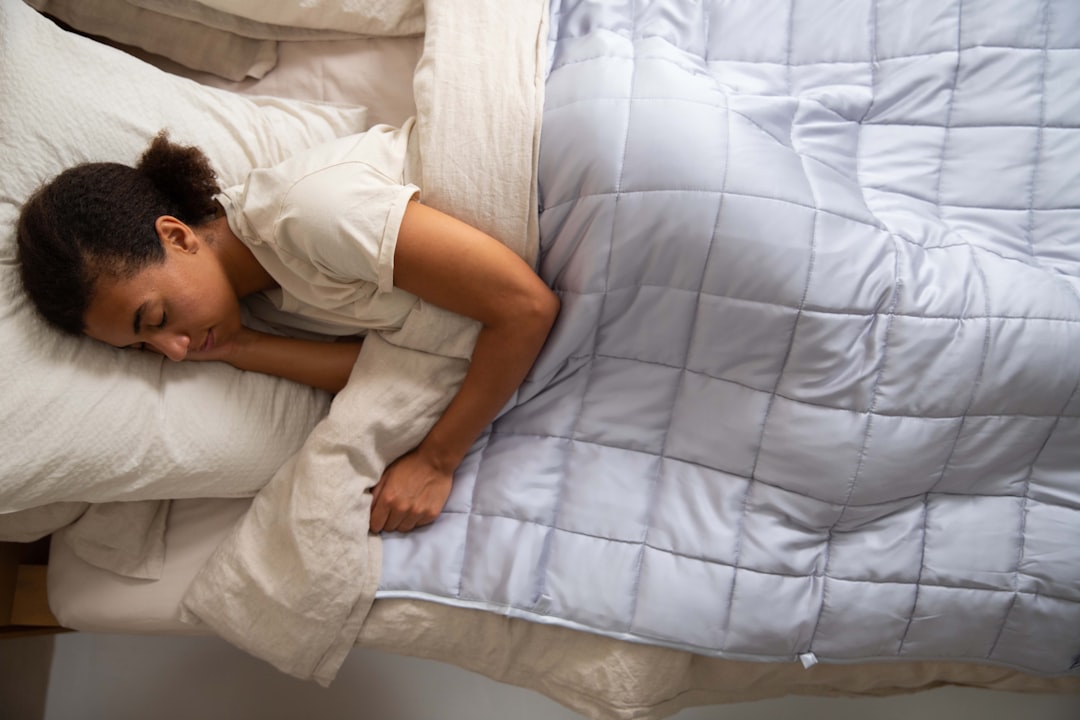Sleep paralysis is a phenomenon that many people experience at least once in their lives, yet it remains shrouded in mystery and misunderstanding. You may have found yourself waking up, fully aware of your surroundings, but unable to move or speak. This unsettling experience can last for a few seconds to a couple of minutes, leaving you feeling vulnerable and frightened.
While it is often accompanied by vivid hallucinations, the experience can be both terrifying and confusing, leading many to question what exactly is happening during these episodes. Understanding sleep paralysis is essential for demystifying this common occurrence. It is not merely a figment of your imagination or a sign of a deeper psychological issue; rather, it is a natural part of the sleep cycle that can happen to anyone.
By exploring the mechanisms behind sleep paralysis, you can gain insight into why it occurs and how to cope with it effectively. This article will delve into the various aspects of sleep paralysis, from its scientific underpinnings to its cultural significance, providing you with a comprehensive understanding of this intriguing phenomenon.
Key Takeaways
- Sleep paralysis is a phenomenon in which a person is temporarily unable to move or speak while falling asleep or waking up.
- During sleep paralysis, individuals may experience hallucinations, a feeling of pressure on the chest, and a sense of fear or impending doom.
- Sleep paralysis occurs when the body is temporarily unable to move during sleep transitions, and it is often linked to disrupted REM sleep patterns.
- Common symptoms of sleep paralysis include the inability to move or speak, a feeling of pressure on the chest, and hallucinations.
- Sleep paralysis can have a significant psychological impact, leading to feelings of fear, anxiety, and disrupted sleep patterns.
What Happens During Sleep Paralysis
During an episode of sleep paralysis, you may find yourself in a state of consciousness while your body remains immobile. This disconnect between mind and body can be disconcerting, as you may feel trapped within your own physical form. You might be aware of sounds in your environment or even see familiar objects in your room, yet your body feels heavy and unresponsive.
This experience can lead to feelings of panic or dread, especially if you are unaware that sleep paralysis is a benign condition. The sensations experienced during sleep paralysis can vary widely from person to person. Some individuals report feeling a weight on their chest, as if someone is sitting on them, while others may experience a sense of floating or being pulled away from their body.
Hallucinations are also common; you might see shadowy figures or hear strange noises that seem all too real. These experiences can be so vivid that they blur the line between reality and imagination, making it difficult for you to rationalize what is happening in the moment.
The Science Behind Sleep Paralysis

To understand sleep paralysis more deeply, it is crucial to explore the science behind it. Sleep paralysis occurs when there is a disruption in the transition between sleep and wakefulness. During this period, your brain may awaken while your body remains in a state of REM (Rapid Eye Movement) sleep, which is when most dreaming occurs.
In this state, your brain sends signals to inhibit muscle activity, preventing you from acting out your dreams. However, if you wake up before this muscle inhibition has subsided, you may find yourself unable to move. Research indicates that sleep paralysis is more likely to occur during periods of sleep deprivation or irregular sleep patterns.
If you often find yourself staying up late or waking up at odd hours, you may be at a higher risk for experiencing these episodes. Additionally, certain lifestyle factors such as stress and anxiety can exacerbate the likelihood of sleep paralysis, as they can disrupt your overall sleep quality. Understanding these scientific principles can empower you to take control of your sleep habits and reduce the frequency of these unsettling experiences.
The Role of REM Sleep in Sleep Paralysis
| Metrics | Data |
|---|---|
| Duration of REM sleep | 90-120 minutes |
| Frequency of REM sleep | 4-5 cycles per night |
| Role of REM sleep in sleep paralysis | Associated with muscle atonia during REM sleep |
| Incidence of sleep paralysis | 7.6% of the general population |
REM sleep plays a pivotal role in the occurrence of sleep paralysis. During this stage of sleep, your brain is highly active, and most vivid dreams take place.
This natural mechanism is essential for ensuring safety during sleep; without it, you could inadvertently harm yourself or others while dreaming. When you experience sleep paralysis, it signifies that your brain has awakened from REM sleep while your body has not yet transitioned out of this protective paralysis. This misalignment can lead to the distressing sensations and hallucinations commonly associated with the condition.
By recognizing the importance of REM sleep in this context, you can better appreciate how vital it is to maintain healthy sleep patterns that allow for adequate REM cycles.
Common Symptoms of Sleep Paralysis
The symptoms of sleep paralysis can be both physical and psychological, often manifesting in ways that are deeply unsettling. You may experience an inability to move or speak upon waking, which can last anywhere from a few seconds to several minutes. This immobility can be accompanied by a sense of pressure on your chest or difficulty breathing, leading to feelings of panic and helplessness.
In addition to physical symptoms, many individuals report experiencing vivid hallucinations during episodes of sleep paralysis. These hallucinations can take various forms—some may see shadowy figures looming over them, while others might hear whispers or feel an ominous presence in the room. The combination of immobility and these intense sensory experiences can create a perfect storm of fear and anxiety, making it crucial for you to understand that these sensations are temporary and not harmful.
The Psychological Impact of Sleep Paralysis

The psychological impact of sleep paralysis can be profound and long-lasting. For some individuals, experiencing these episodes can lead to heightened anxiety about going to sleep or fear of the dark. You may find yourself dreading bedtime, worried that another episode will occur.
This fear can create a vicious cycle where anxiety about sleep leads to poor sleep quality, which in turn increases the likelihood of experiencing sleep paralysis. Moreover, the emotional toll of these experiences can extend beyond the episodes themselves. You might grapple with feelings of isolation or confusion as you try to explain your experiences to others who may not understand what you’re going through.
This lack of understanding can exacerbate feelings of anxiety and distress, making it essential for you to seek support from friends, family, or mental health professionals who can provide reassurance and guidance.
Cultural and Historical Perspectives on Sleep Paralysis
Throughout history, sleep paralysis has been interpreted through various cultural lenses, often viewed as supernatural phenomena or spiritual encounters. In many cultures, individuals experiencing sleep paralysis have reported feeling a presence in the room—often described as an evil spirit or demon sitting on their chest. These interpretations reflect the deep-seated fears and beliefs surrounding the unknown aspects of human consciousness.
In literature and folklore, sleep paralysis has been depicted as an encounter with malevolent forces or otherworldly beings. For instance, in some cultures, it has been linked to witchcraft or possession. Understanding these cultural narratives can provide valuable context for your own experiences with sleep paralysis and help you realize that you are not alone in facing this phenomenon.
How to Manage and Prevent Sleep Paralysis
Managing and preventing sleep paralysis often begins with establishing healthy sleep habits. You should aim for a consistent sleep schedule by going to bed and waking up at the same time each day. Prioritizing quality sleep is essential; creating a calming bedtime routine can help signal to your body that it’s time to wind down.
Limiting caffeine intake and reducing screen time before bed can also contribute to better overall sleep quality. Additionally, addressing underlying stress and anxiety through relaxation techniques such as meditation or deep breathing exercises can be beneficial. Engaging in regular physical activity during the day may also improve your sleep quality and reduce the likelihood of experiencing episodes of sleep paralysis.
The Connection Between Sleep Paralysis and Other Sleep Disorders
Sleep paralysis is often associated with other sleep disorders such as narcolepsy and insomnia. If you find yourself experiencing frequent episodes of sleep paralysis, it may be worth exploring whether you have an underlying condition that could be contributing to these occurrences. Narcolepsy, for instance, is characterized by excessive daytime sleepiness and sudden bouts of sleep that can lead to episodes of paralysis upon waking.
Insomnia can also play a role in increasing the likelihood of experiencing sleep paralysis due to disrupted sleep patterns and insufficient REM cycles. By understanding the connections between these disorders and sleep paralysis, you can take steps toward addressing any underlying issues that may be exacerbating your experiences.
Debunking Myths and Misconceptions About Sleep Paralysis
There are numerous myths and misconceptions surrounding sleep paralysis that can perpetuate fear and misunderstanding about the phenomenon. One common myth is that individuals experiencing sleep paralysis are possessed or under some form of supernatural influence; however, this belief lacks scientific backing and only serves to heighten anxiety around the experience. Another misconception is that sleep paralysis only occurs in individuals with mental health issues; in reality, it can affect anyone regardless of their psychological state.
By debunking these myths and educating yourself about the true nature of sleep paralysis, you can approach your experiences with greater understanding and less fear.
Seeking Help for Sleep Paralysis
If you find that episodes of sleep paralysis are significantly impacting your quality of life or mental well-being, seeking help from a healthcare professional may be beneficial. A doctor or mental health professional can provide guidance on managing symptoms and addressing any underlying issues contributing to your experiences. Therapeutic approaches such as cognitive-behavioral therapy (CBT) may help alleviate anxiety related to sleep paralysis by teaching coping strategies and reframing negative thought patterns associated with these episodes.
Additionally, discussing your experiences with supportive friends or family members can provide comfort and reassurance as you navigate this challenging phenomenon. In conclusion, understanding sleep paralysis is essential for demystifying this common yet often frightening experience. By exploring its scientific basis, symptoms, psychological impact, cultural perspectives, and management strategies, you can empower yourself with knowledge that fosters resilience and peace of mind during episodes of sleep paralysis.
Sleep paralysis is a phenomenon that can feel incredibly real due to the brain’s state during the transition between sleep and wakefulness. During this time, the brain is partially awake, allowing for awareness of the surroundings, but the body remains in a state of atonia, or muscle paralysis, which is typical during REM sleep. This disconnection can lead to vivid hallucinations and a sense of presence, making the experience feel very real and often frightening. For a deeper understanding of the science behind sleep paralysis and why it feels so real, you can explore a related article on this topic at Freaky Science. This resource delves into the neurological and psychological aspects that contribute to the intense realism of sleep paralysis experiences.
WATCH THIS! 🧠 The Brain Hack That Makes You See Ghosts!
FAQs
What is sleep paralysis?
Sleep paralysis is a temporary inability to move or speak that occurs when waking up or falling asleep. It is often accompanied by a feeling of pressure on the chest and a sense of fear.
Why does sleep paralysis feel real?
Sleep paralysis can feel real due to the combination of being in a state between wakefulness and sleep, and the brain’s inability to distinguish between dream imagery and reality. This can lead to vivid and often frightening hallucinations.
Is sleep paralysis dangerous?
While sleep paralysis itself is not dangerous, the experience can be distressing and lead to anxiety about falling asleep. It is important to seek medical advice if sleep paralysis is frequent or causing significant distress.
Can sleep paralysis be treated?
Treatment for sleep paralysis often involves improving sleep hygiene, managing stress, and addressing any underlying sleep disorders. In some cases, medication or therapy may be recommended to help manage the symptoms.
